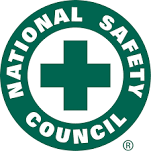How Do You Define Risk Management?
All companies face a variety of risks, whether financial, property damage, business interruption, supply chain, loss of key personnel or personal injury. You can purchase insurance to cover the costs of these kinds of losses.
But the best coverage is to avoid those losses in the first place by reducing the likelihood of their occurrence.
An insurance manager once told us that fully 50% of his clients’ claims over a five-year period were directly attributable to the contractors that came onsite. In a speech on risk, retired Texas A&M professor Sam Mannan said that contractors represent one of the highest probabilities of real loss to companies.
So how best to manage the risk that contractors pose when working on your property?
Obviously, your project management team will have to implement control procedures, but there are three key steps you can take to optimize your risk management process:
- Prequalify all contractors to identify those with the safest record of performance;
- Educate and test all contractor employees on where hazards exist, where emergency stations are located, procedures for evacuation and other safety-related issues;
- Verify contractor compliance with your safety program and training requirements.
These functions can be implemented in-house, but are typically distributed across different departments (EH&S, Purchasing, Finance, etc.) and assigned as a part-time responsibility (with the potential for errors and omissions that can happen with part-time focus).
The FIRST, VERIFY service can be customized to meet your specific risk management requirements:
- Contractor prequalification
- Certificate of insurance management
- Employee safety orientation
- Remote contractor safety audits
Are you managing the risk introduced by your contractors and suppliers?



